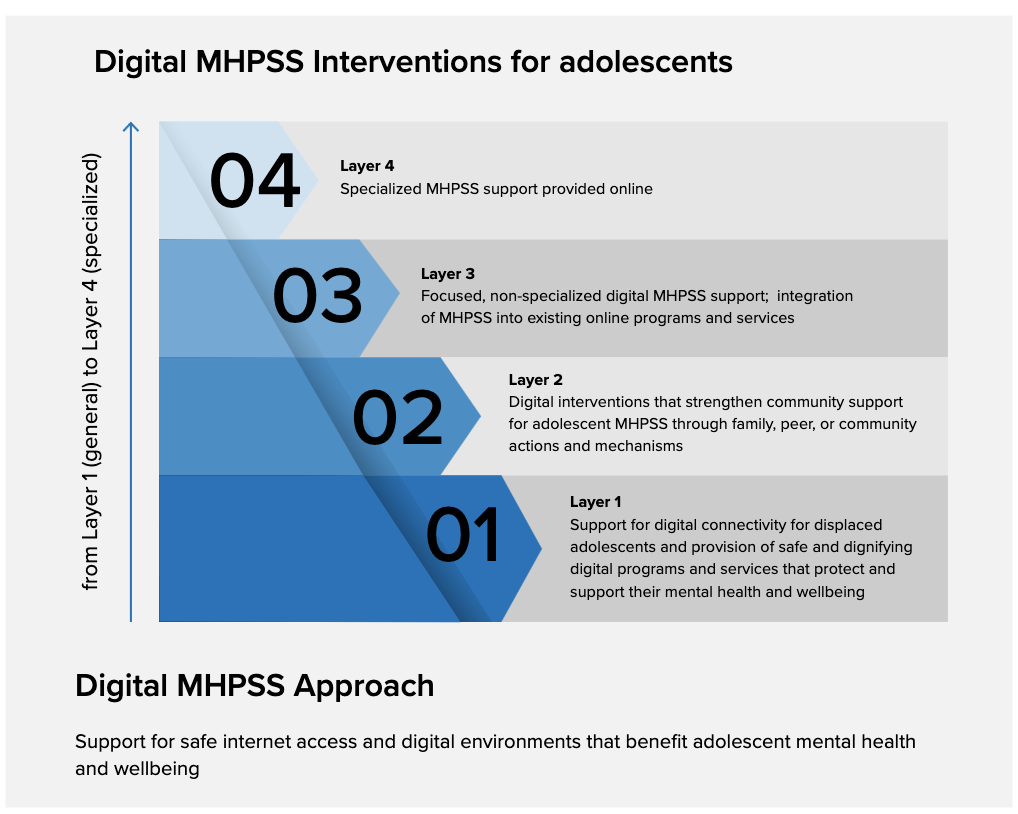Last year I wrote a report for UNHCR that explores the potential of digital mental health and psycho-social support (MHPSS) for displaced and stateless adolescents. The key question was whether digital could help to safely expand MHPSS services to a population that is often at high risk due to life circumstances and contexts, yet remains largely under-served.
While it is possible that digital could provide some support (and in fact many young people already go online to find mental health support, especially from their peers), there is also a debate raging around whether social media and the online environment are key contributors to the adolescent mental health crisis. As usual, when you dig into a complex area like this one, nuance is important.
To unpack the topic, we started with the World Health Organization’s traditional MHPSS pyramid, which is used by most humanitarian organizations to frame their MHPSS work. We adapted the pyramid to consider how digital interventions might be safely and feasibly incorporated at the different layers. This presupposes that adolescents can safely access the digital environment so that they could take advantage of digital MHPSS services.

The report summarizes existing evidence and insights from UNHCR staff working in several country operations to lay out the case and the caveats for digital MHPSS for forcibly displaced and stateless adolescents. We offer ideas on if, when, where, and how digital MHPSS might be explored as an option for reaching these adolescents. We also look at the risks of digital interventions, and explore contextual challenges with digital interventions for this population. This leads to a set of core insights into the key benefits of digital MHPSS at the different levels of the MHPSS Pyramid alongside the barriers, limitations, and risks.
We highlight good practices for designing and implementing digital MHPSS programming with forcibly displaced and stateless adolescents and make recommendations for further action by UNHCR at strategic, advocacy, policy, monitoring, evaluation, research, operational, and guidance levels. Rounding off the report is a checklist for practitioners to follow when designing and implementing digital MHPSS approaches and interventions.
Read the full report here or take a glance at the executive summary and let us know what you think!
